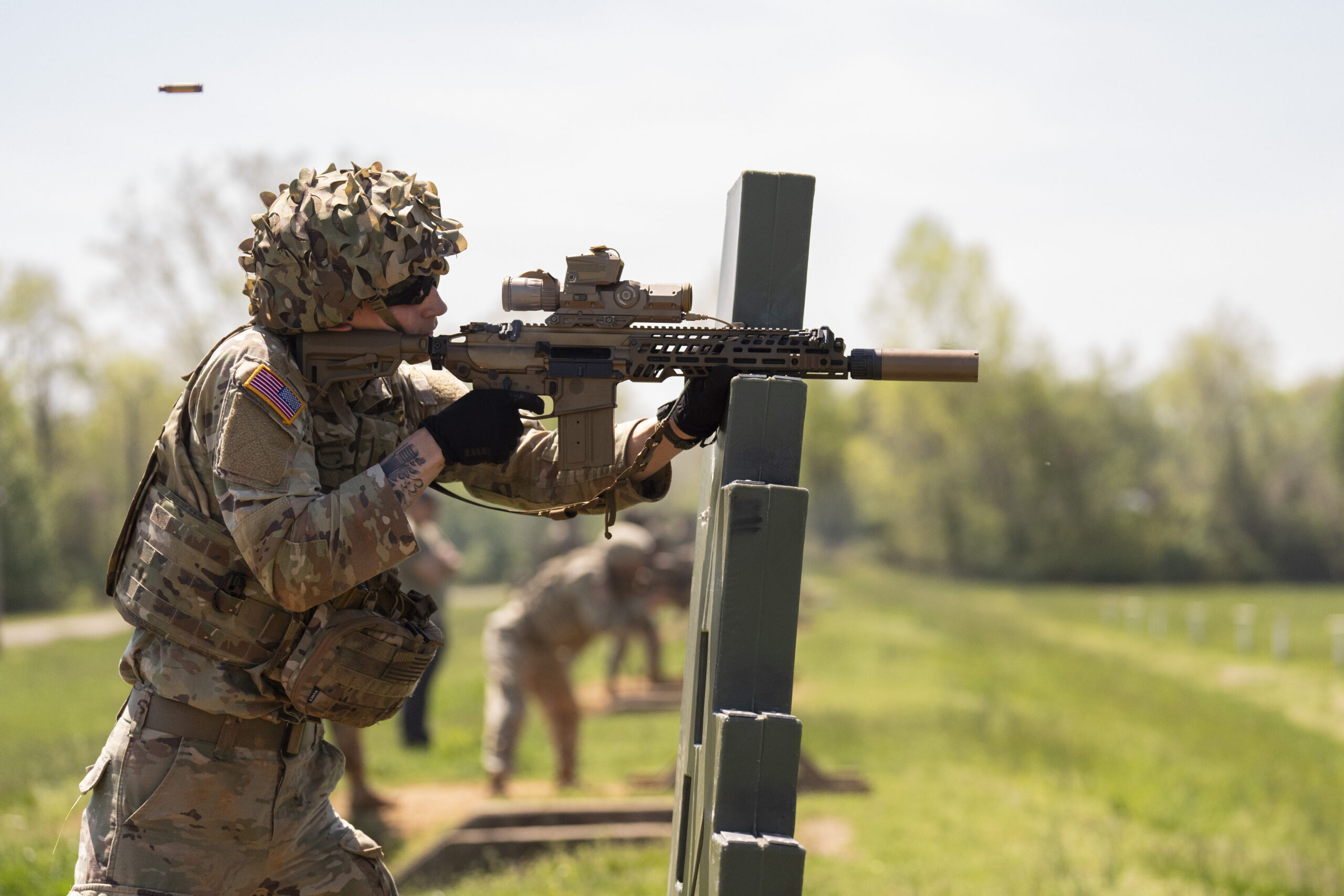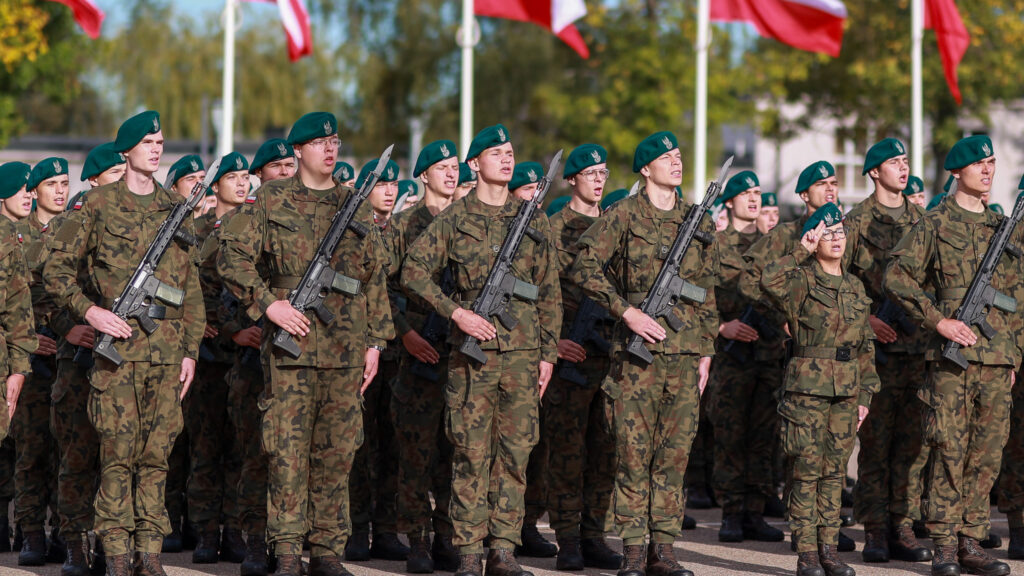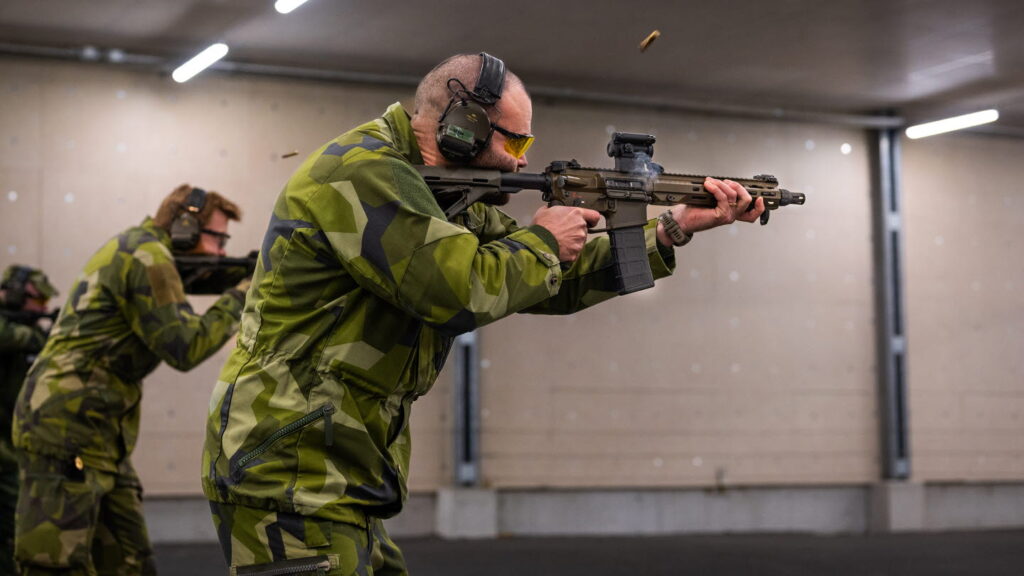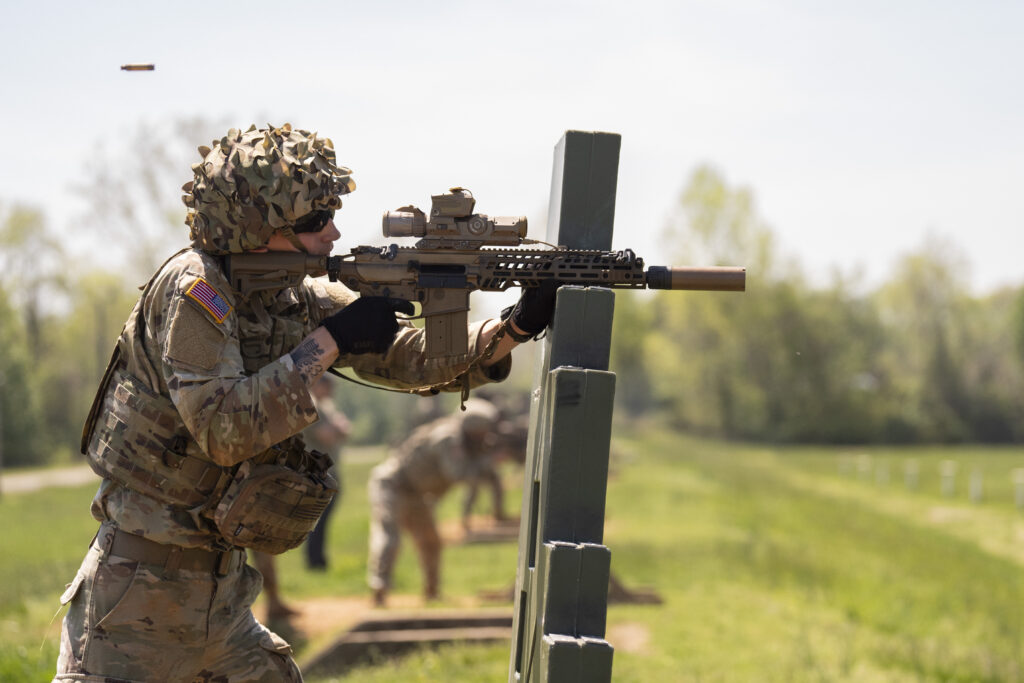
Assault rifle programmes: Continuity and change
David Saw
From outsourced versus domestic production, to collaborative procurement, to the introduction of a new calibre – the story of modern assault rifle procurement reveals the divergent paths being taken by various NATO members, Ukraine, and the US.
In the past, the capability to design, develop and manufacture a complete range of small arms was considered to be a fundamental part of a national defence industrial capability. Even a nation that could not design and develop small arms would have the capability to produce weapons in this class locally under licensed production terms. A national defence industry would also have the capability to produce ammunition for whatever small arms were in the inventory. That was the situation that lasted for more than a century in Europe; however, since the end of the Cold War, small arms manufacturing capabilities in Europe have entered a period of decline.
France is a prime example of this phenomenon, as France was once a world leader in small arms and related ammunition technology. It designed, developed and produced pistols, rifles and light machine guns – the complete range of small arms systems and their associated ammunition. One might argue that this was not a critical defence industrial capability in the post-Cold War world, especially since the size of ground forces was shrinking. In 1996, the French government suspended compulsory military service, officially ending conscription in 2001. If you are not going to be building hundreds of thousands of weapons for a large conscript Army, is there really need for a small arms industry?

Germany also conducted an assault rifle programme known as the System Sturmgewehr Bundeswehr to replace its existing inventory of HK G36 rifles. In contrast to France, Germany had maintained its small arms industrial base. At the end of 2022, funding was released covering the acquisition of 118,718 HK416A8 rifles, in two variants; the G95A1 with a 16.5-inch barrel and the G95KA1 with a 14-inch barrel, with 2026 the in-service date. German Special Forces had previously acquired the HK416A7, with the official designator being G95. Outside of France and Germany, the HK416 has also been supplied to Ukraine where it has seen combat service.
Ukraine’s frontline
Put simply, it would be surprising if there is a modern or relatively modern assault rifle that has not been supplied to the Ukrainian military. The HK416 and its civilian version the semi-automatic MR223 have been supplied to Ukraine, HK416A2 models with 10.4 inch and 14.5-inch barrels, supposedly supplied via The Netherlands have been seen, as have HK416A5 rifles. Other weapons supplied to Ukraine include G36 and HK433 rifles, while ‘official’ German military assistance has included Haenel MK556 rifles, some 4,005 of which have been supplied to Ukraine.
Belgium has also supplied assault rifles to Ukraine; as might be imagined, these are all FN Browning weapons. Around 5,000 ex-Belgian Army FNC 5.56 × 45 mm rifles, a small number of F2000 weapons, a very limited number of SCAR-L rifles in 5.56 × 45 mm and even FAL rifles have been delivered. Former French Army FAMAS weapons have been delivered, while Steyr AUGs have also arrived in Ukraine; according to some, these are ex-Australian, while others suggest supply from Austria. Elsewhere, Thales Australia has supplied their recently developed Australian Combat Assault Rifle (ACAR) in both 5.56 × 45 mm and 7.62 × 51 mm in limited numbers.
Canada has been a major source of assault rifles for Ukraine, supplying Colt Canada C7 and C8 systems, the M5 carbine and even M16A4 and M4 weapons acquired via the US. The Netherlands has also supplied C7 weapons to Ukraine. French manufacturer Verney Carron, via its Lebel brand, also struck a deal to supply Ukraine with AR pattern rifles. Spanish CETME L rifles have also been exported to Ukraine. Poland has also been a major supplier of assault rifles to Ukraine, including ex-Polish Army AKMS weapons, the Tantal rifles in 5.45 × 39 mm previously used by the Polish Army, as well as the current issue MSBS Grot in 5.56 × 45 mm.

It is also well to remember that Ukraine was awash with assault rifles even before the supplies received in the current conflict. Large numbers of AKM/AKMS rifles in 7.62 × 39 mm, as well as large numbers of AK-74/AKS-74 rifles in 5.45 × 39 mm. There were also post-Soviet era weapons such as the Fort 221 and 224, a locally licensed version of the Israeli IWI Tavor in 5.56 × 45 mm. Another locally-produced weapon is the Vulcan-M ‘Malyuk’; this is a bullpup design based on the AK action and used by Ukrainian Special Forces, and is available in 7.62 × 39 mm, 5.56 × 45 mm and 5.45 × 39 mm. Reportedly there is also an M4 clone being produced in Ukraine.
Ukrainian forces have also captured a large number of Russian assault rifles during the current conflict and are quick to use them against their former owners. Captures cover the complete range of Soviet-era small arms, up to the current issue AK-12. One aspect of the conflict in Ukraine is just how quickly small arms systems such as assault rifles can be lost, damaged or be beyond economic repair due to combat action. So, despite the fact that Ukraine has been supplied with large quantities of assault rifles, operational wastage means that a constant supply of weapons needs to be available, hence the importance of BREN 2 production in Ukraine.
Recent acquisitions
In addition to assault rifles supplied by Poland to Ukraine, assault rifle developments in Poland are worthy of further discussion. Having used standard Soviet weapons, Poland moved to develop its own assault rifle solutions in the post-Cold War era. Work on the wz.88 Tantal rifle in 5.45 × 39 mm had started at Fabryka Broni Lucznik Radom (FB Lucznik) towards the end of the Soviet era as a replacement for the AKMS. The weapon entered service in the early 1990s, but it had a very short operational life with most weapons put into storage or sold off in the 1990s.

Poland later developed a new a new small arms solution in the form of the MSBS Modular Small Arms System, primarily in 5.56 × 45 mm calibre. Initially the idea was that the weapon would come in two formats, one conventional and the other a bullpup for special forces. The bullpup variant was subsequently dropped and the programme emerged as a weapon available in multiple formats featuring interchangeable parts. There would be a standard assault rifle variant, a carbine, and a magazine-fed Squad Automatic Weapon equivalent (all of these available in 5.56 × 45 mm, with 7.62 × 39 mm as an option); also discussed was a Designated Marksman Rifle (DMR) variant in 7.62 × 51 mm. A civilian semi-automatic version of the system would also be made available.
At present, the primary Polish Army variant of the system is the MSBS Grot C assault rifle, the Grot C16 FB-A1 variant was the first production batch, and after minor modifications the Grot C16 FB-A2 second production batch came into service. In December 2024, the Polish Ministry of National Defence announced a set of major small arms orders, with deliveries between 2026 and 2029. As part of this, there is a confirmed order for 46,000 Grot C16 FB-A2 rifles, with an option on additional purchases. An unknown quantity of MSBS Grot rifles in 7.62 × 39 mm have been sold to Rwanda.
Scandinavian solutions
With both Finland and Sweden joining NATO, there is added impetus to collaborative defence procurement between the two nations. If one country has a suitable weapon system solution, it makes sense for the other to consider adopting it, delivering interoperability and reducing costs. This was certainly the case as far as Sweden and Finland were concerned, when both found themselves seeking a new small arms solution.
Back in 2020, the Finnish Defence Forces (FDF) had begun working with Sako (part of Beretta Holding) in Finland on the development of a new DMR and a sniper rifle. In December 2021, the FDF signed a contract with Sako covering the acquisition of two 7.62 × 51 mm weapons, the KIV 23 DMR and the TKIV 23 sniper rifle. Both of these weapons formed part of the M23 family, with that family also including an assault rifle option, which the FDF would purchase eventually. The FDF strategy was to purchase M23 systems in phases as part of “a controlled and cost-effective phase out of the current system(s)”.

The Automatkarbin 24 (AK24) programme to replace the AK5 with the M23 began in 2024.I Initially, 200 test and evaluation weapons were delivered, followed by a series production delivery of 7,500 AK24 weapons in 2024. The target for 2025 is the delivery of 15,000 weapons, with 15,000 more arriving in 2026 for a total of 37,500. The DMR variant of the weapon was originally due to be delivered in 2025, but at this point quantities and actual delivery schedules are unclear.
A revolution or not?
Thus far, most of the weapons discussed here have been in the standard NATO calibres of 5.56 × 45 mm or 7.62 × 51 mm for DMR or battle rifle applications. Considering that the US essentially forced most of NATO to adopt the 7.62 × 51 mm round and then, not so long afterwards, went and selected a new assault rifle with a 5.56 × 45 mm round, there are fears that history might be repeating itself. The reason is the US Army Next Generation Squad Weapons (NGSW) programme.
Under NGSW, the US Army is looking for an M4 carbine replacement with the Next Generation Squad Weapon-Rifle (NGSW-R) and an M249 replacement with the Next Generation Squad Weapon-Automatic Rifle (NGSW-AR). The state of play with this programme is that SIG Sauer was selected as the winner of the programme in 2022, providing the XM7 for the NGSW-R and the XM250 for the NGSW-AR requirements. The round for the new weapons will be the SIG Sauer developed the 6.8 × 51 mm Common Cartridge, also known as .277 SIG Fury in commercial applications.
Both the XM7 and the XM250 are in the trials process with US Army and National Guard formations and, at this point, these are weapons that seem to have much to offer, with the new 6.8 × 51 mm round supposedly delivering performance beyond that achieved by current 5.56 × 45 mm and 7.62 × 51 mm NATO rounds. As an aside, there are also thoughts of replacing the 7.62 × 51 mm round in light/medium machine gun applications with weapons employing the .338 Norma Magnum amongst various manufacturers – what would be the price for NATO cartridge standardisation then?

David Saw





